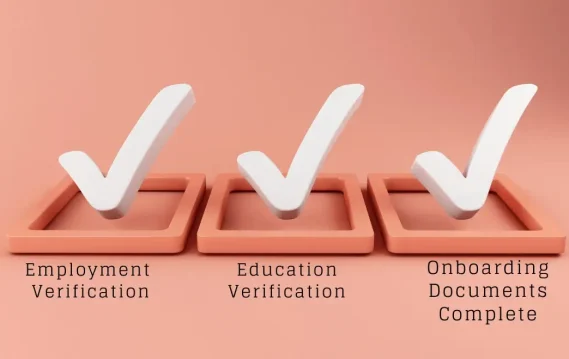Key Points:
- What’s behind the compliance and verification process?
- Organizing key documents is essential in having a smooth process
- Dishonesty never pays
So, you landed your dream job. What should you be prepared with to fulfill the onboarding requirements?
Most employers will start a compliance and verification process before confirming a start date. This is a common requirement, whether it’s for a permanent or temporary position. With that, most employers will request their applicants to complete an Application or Information Form outlining the detail of their qualifications. The form may look and feel different based on each employer, however, the content of the form is consistent – history of education, employment, and past addresses during a certain timeframe (i.e., past 7 years), references, etc.
If you’ve ever wondered why this process was necessary, it is to conduct pre-employment checks that can include a criminal history check, verifications of education and previous employments, and more based on the nature of the role you will be filling. Thus, it is extremely critical that you be mindful of the information you have listed when presenting your resume for a position you are applying for.
Yes, you can elaborate more on your experience depending on the role, however, you should never falsify the details of your history. It is going to be in your best interest to provide accurate information as the truth comes to light during the onboarding stage. One challenge employers may face during the onboarding stage is not being able to verify education or previous employment. It is not uncommon for schools or colleges to have a lengthy process when it comes to verifying the year you have graduated, or sadly, for previous employers to either have closed down or acquired by another company ultimately resulting in a difficult time finding the right person to confirm your tenure with them.
As a last resort, most employers will request a copy of your diploma or degree, or W2s or pay stubs to adjudicate or utilize as a placeholder. If you ever come across those documents in the middle of reorganizing your office or simply just cleaning some parts of your household, I highly recommend storing that information in a safe place as you will never know when those documents will come in handy. Some employers may be more flexible than others and can waive such requirements, however, most employers will want to verify the information you have listed on the resume, consistent with their requirements.
In closing, the process of onboarding can be lengthy, but you can help the process by completing your paperwork accurately and making supporting documentation available. Once the onboarding process is complete it can help land your dream job!
References:
Image courtesy of Canva



